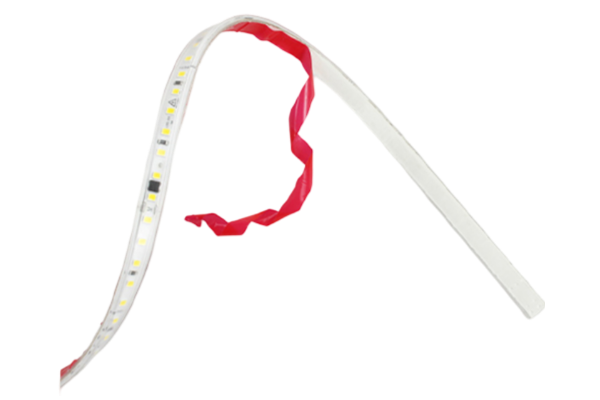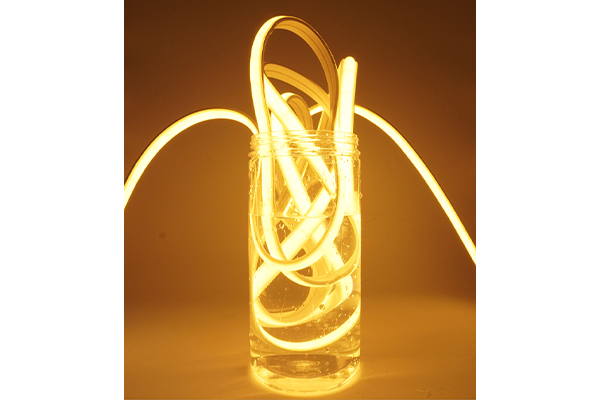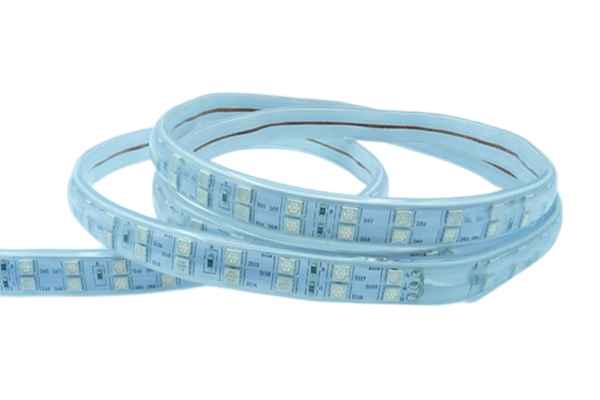How to effectively control the voltage attenuation rate of high voltage light strip during long-term use?
Release Time : 2025-10-15
The voltage droop problem faced by high-voltage light strips over long-term use is primarily due to the combined effects of line resistance, power supply stability, and environmental factors. Effectively controlling voltage droop requires a comprehensive approach encompassing power supply design, line optimization, heat dissipation management, and intelligent voltage regulation. This approach, combined with improvements in material selection and installation techniques, results in a systematic solution.
Power supply stability is crucial for controlling voltage droop. High-voltage light strips are typically connected directly to the mains. If the power transformer's output voltage fluctuates by more than 5% of its rated value, it accelerates the aging of the strip's internal components. Using a driver with overvoltage protection and voltage regulation ensures a constant input voltage. For example, sinusoidal voltage regulation adjusts the output voltage waveform, allowing the strip to operate within a more stable voltage range. Compared to thyristor phase-cut voltage regulation, this technology can reduce voltage fluctuations by over 30%, significantly mitigating voltage drop caused by voltage instability.
Optimizing line resistance is a key measure for reducing voltage drop. When a high-voltage light strip exceeds 50 meters in length, line resistance becomes the primary source of voltage drop. By shortening the connection distance between the power supply and the light strip and using thicker wire (e.g., 2.5mm² copper wire instead of 1.5mm²), line resistance can be reduced. For extra-long light strips, a distributed power supply design—adding a power point in the middle of the strip and limiting the length of each segment to less than 50 meters—can effectively balance voltage distribution. Furthermore, optimizing wiring paths to avoid tangling or excessive bending can further reduce resistance losses.
Heat management directly impacts the operating temperature and voltage stability of light strips. Due to their higher voltage, high-voltage light strips typically generate 20%-30% more heat than low-voltage ones. If heat dissipation is poor, the internal temperature of the light strip rises, leading to increased resistance and a vicious cycle of "temperature-resistance-degradation." Using highly thermally conductive materials such as aluminum substrates or thermal adhesives can accelerate heat transfer. Avoiding confined spaces and ensuring adequate air circulation during installation can reduce operating temperatures by 10-15°C, thereby slowing voltage degradation.
The introduction of intelligent voltage regulation technology provides a dynamic solution for voltage control. By integrating sensors and a voltage regulator module, the system monitors the operating voltage and temperature of the light strip in real time and automatically adjusts the output voltage. For example, if voltage droop exceeds 3%, the voltage regulator fine-tunes the input voltage to compensate for line losses. If the temperature is too high, the voltage is reduced to reduce heat generation. This closed-loop control approach ensures that the light strip operates within the optimal voltage range for a long time, extending its lifespan.
The long-term impact of material selection on voltage droop cannot be ignored. The quality of the flexible printed circuit (FPC) in a high-voltage light strip, the reliability of the solder joints, and the temperature resistance of the encapsulant all indirectly affect voltage stability. High-quality FPCs using low-resistance copper foil can reduce line losses; the use of lead-free solder prevents poor contact caused by solder joint oxidation; and high-temperature-resistant encapsulant prevents breakage caused by thermal expansion and contraction. While these material improvements do not directly reduce voltage droop, they can improve the overall reliability of the light strip and reduce voltage fluctuations caused by faults.
Refined installation processes are fundamental to controlling voltage droop. When connecting light strips, ensure that solder joints are full and free of cold solder joints to avoid local voltage increases caused by poor contact. For segmented light strips, use dedicated connectors at the interfaces to reduce resistance. When bending the strips, maintain a minimum bend radius (typically five times the thickness of the light strip) to prevent internal wiring breakage. These process details can significantly reduce voltage decay caused by improper installation.
Effective control of voltage decay in high-voltage light strips requires a comprehensive approach, including improving power supply stability, optimizing circuit resistance, enhancing heat dissipation management, applying intelligent voltage regulation technology, improving material quality, and refining installation techniques. These measures not only slow down voltage decay but also enhance the overall performance and lifespan of the light strip, ensuring long-term stable operation.







